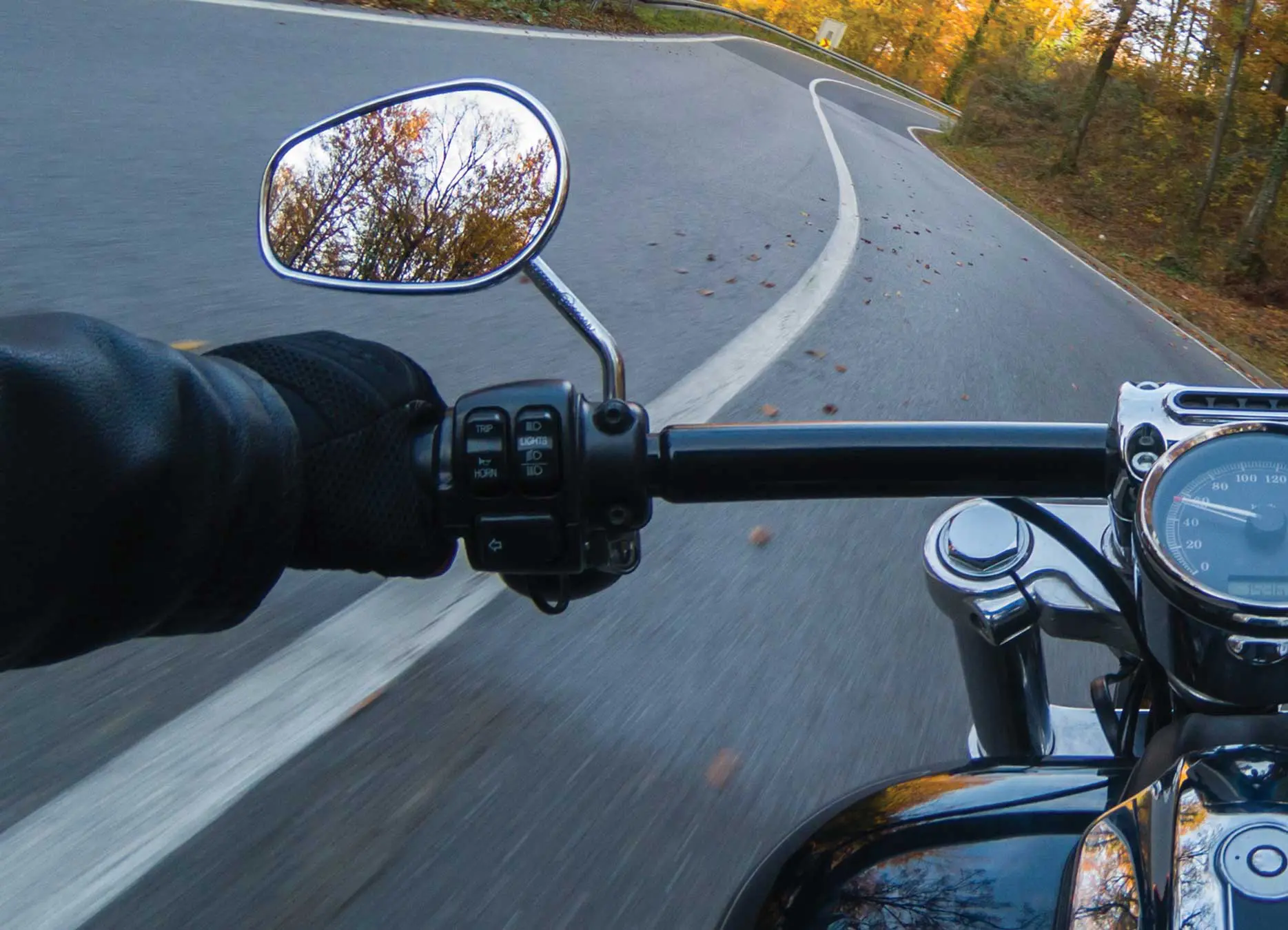Winding Down Riding Season
By MS. PAULA COLLINS, STAFF WRITER
Motorcycle enthusiasts are all about having fun. Summer is a great time to experience the thrill of the open road. However, the calendar does not lie, and unless you live in southern states, the window for great motorcycle rides is about to close until spring.
Squeezing that last bit of fun out of summer results in strategically packing schedules, spending time with friends at backyard barbecues, and gathering at the beach or the lake. The weather is amazing, and the scenery is breathtaking. It is a great time to take a bike ride!
A beautiful (and safe) ride starts with good preparation. Do the following before your outings:
- Be well rested. Fatigue slows the reaction time needed to stay safe on the road.
- Plan the route in advance so that there are no surprises. Road construction can make travel tedious for motorcycles.
- Check the road worthiness of your ride, including the condition of the tires. Make sure all lights work. Some bikes are notorious for developing shorts in their electrical system.
- Dress for the road. Wear a helmet that is approved by the Department of Transportation (DOT) and eye protection. Statistics from the National Highway Traffic Safety Administration (NHTSA) indicate that wearing a helmet is 37 percent effective in preventing fatalities for motorcycle riders and 41 percent effective for passengers. Also, wear gloves, appropriate footwear (sturdy boots with good traction), heavy jeans, and a jacket or vest that has reflective properties. A leather jacket and chaps provide even better protection, and they often come with reflective trim that improves rider visibility for other motorists. In the event of a fall or crash, this apparel could prevent significant skin abrasion and tissue damage.
- Pack plenty of water to stay hydrated—and avoid drinking alcohol. According to the NHTSA, in 2019, U.S. motorcycle drivers were impaired by alcohol in 29 percent of all fatal crashes. Impairment is defined as having a blood alcohol content (BAC) of .08 grams per deciliter or higher. In contrast, passenger car drivers were impaired in fatal crashes only 20 percent of the time, light truck drivers 19 percent, and large truck drivers 2 percent. Recognize that even one drink may impair your judgment.
- Never rush to get there. In 2019, speed was a factor in 33 percent of fatal motorcycle crashes. It is wise to obey speed limits and to adjust your driving pattern to road conditions and traffic volume. Be especially aware of vehicles that could crowd your lane. Always drive defensively and anticipate an escape strategy.
- Be critter aware. Although not a major cause of fatalities and injuries, it takes only one encounter. As summer winds down, animals’ grazing patterns and other behaviors change. Wildlife may occasionally wander onto the roadway, especially late in the day or at night. Anticipate their movement. Scan both sides of the road for animals so you have time to slow down. At night, look for headlight reflection off of the eyes of animals on the side of the road.
- Factor in a nap before getting back on the bike to head home. A day on the lake or at the beach can cause extreme fatigue, making you less aware of your surroundings. However, a nap cannot erase alcohol impairment, as it takes hours for alcohol’s effects to wear off. Absolutely do not ride after drinking alcohol.
- Stay vigilant. In 2019, rider fatalities involved a motorcycle colliding with a fixed object 23 percent of the time. The object could have been a stalled vehicle, a blown-out tire, an animal, a tree, a bridge railing, or a rock wall on a curve.
Riding with an alert mind helps you make the kind of decisions that keep the ride both safe and fun. Enjoy the nice weather on your bike until it is time to put it in the garage until the next riding season.
MOTORCYCLE UNIT SAFETY TRACKING TOOL (MUSTT) RESPONSIBILITIES
The Motorcycle Unit Safety Tracking Tool (MUSTT) was designed to provide training data for the Department of the Air Force motorcycle riders and fill the requirements for monitoring both rider demographics and training outlined in AFI 91-207, U.S. Air Force Traffic Safety Program. With the data collected, the Department of the Air Force can make informed decisions on what guidance changes need to be made to keep Airmen and Guardians safe while driving a motorcycle, and what training each rider has received.
Riders
- Create and update their account in MUSTT.
- Upload training documentation.
Motorcycle Safety Representative (MSR)
- Ensure riders’ accounts are created and updated.
- Validate and approve training submitted to MUSTT.
- Maintain accurate unit motorcycle rider MUSTT information.

